I'm going to go out on a limb and say that this is by far dominated by simple supply and demand. Ethernet switches are mass produced with huge economies of scale and sell at discounts over chips that are not so widely used. FPGAs, I'd say, are not nearly so widely deployed as ethernet switches and so they cost more because the development and infrastructure costs are spread over fewer customers.
This isn't about process or die size or anything like that. Consider the Xilinx Virtex-7 (only because I could more readily find data for it) and let's compare to a few contemporaries :
- Virtex7 (2011), 28nm, ~6.8 billion transistors, $2500USD (popular models) to $35,000USD (higher end models)
- NVIDIA Kepler GK110 (2012), 28nm, ~7.1 billion transistors, Tesla K20 cards ~$3200USD at launch (chip price some smaller fraction of that)
- XBoxOne SOC (2013), 28nm, ~5 billion transistors, $499 USD for whole XBox at launch
- Xeon E5-2699 v3 [18 core] (2014), 22nm, ~5.6 billion transistors, ~$4500USD
So overall the Virtex FPGA seems reasonably priced (more popular models) compared to other silicon of a similar transistor count, generation, and sales volume. The XBox SOC sticks out as something which was widely deployed in a consumer device and the cost is likewise much lower.
NVIDIA's compute GK110 was much less widely deployed than similar consumer chips that ended up in gaming cards and was similarly more expensive, even given the architectural similarities and the fact that the chips were made in the same factory.
As for the Virtex chips, there isn't a 10x difference in the complexity of the $2500 chips vs the $35000 chips - the latter are simply much less popular and, with lower sales volumes, the cost per unit is necessarily higher.
The market is full of this. Anything you can sell a hundred million of you can always make cheaper than something you will maybe sell a hundred thousand of.
